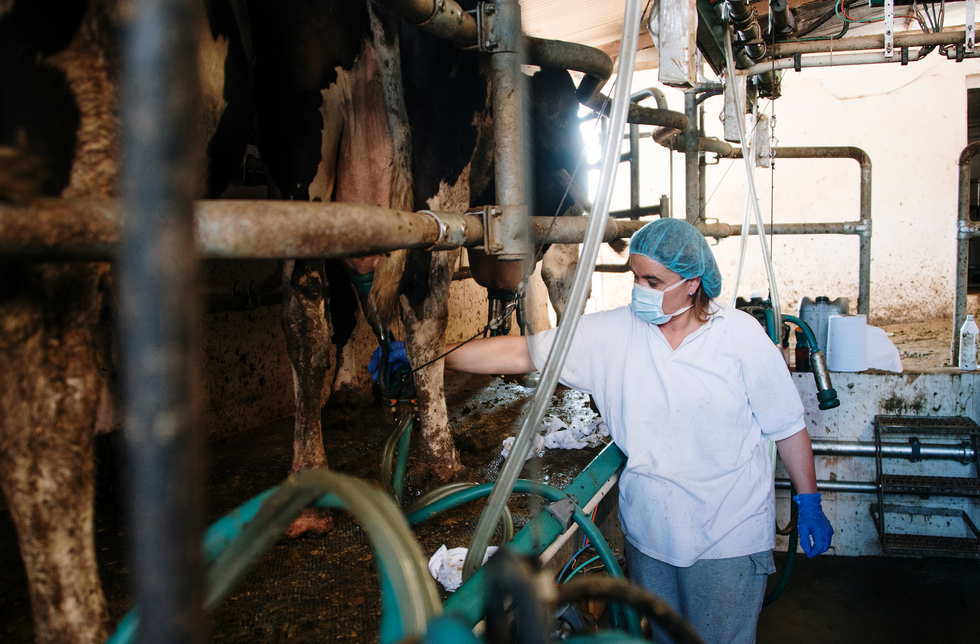Seven people developed influenza symptoms after being exposed to Missouri bird flu patient
Getty Images
- Seven people developed influenza symptoms after being exposed to Missouri bird flu patient
- The patient was the first confirmed case with no known animal exposure
- US health authorities fear HN51 bird flu is spreading between humans
Don't Miss
Most Read
Trending on GB News
Health authorities in the US are studying seven people who developed influenza symptoms after being exposed to a Missouri bird flu patient, raising the possibility of the first human-to-human transmission of the infection.
This raises serious alarm bells as the mortality rate for HN51 avian influenza in humans is high, with a 52 per cent case fatality rate (CFR) from January 1, 2003, to July 19, 2024.
None have tested positive for HN51 and work is underway to see if they have antibodies to the strain that's spreading like wildfire among birds and dairy cows in the US, the Centers for Disease Control and Prevention said Friday in a statement.
Six were healthcare workers who encountered the first American known to be infected with bird flu without previous exposure to a sick animal, and the other was a close household contact of the patient.
All developed mild respiratory symptoms after their exposure.

HN51 is spreading like wildfire among birds and dairy cows in the US
Getty Images
One tested negative for bird flu and the others weren't tested for active infections since they weren't identified quickly enough to definitively diagnose it or rule it out, the CDC said.
More than 100 healthcare workers were exposed to the Missouri patient to varying degrees while the person was hospitalised, the agency said.
"CDC continues to closely monitor available data from influenza surveillance systems, particularly in affected states, and there has been no sign of unusual influenza activity in people, including in Missouri," the agency said.
H5N1 avian influenza virus has spread like wildfire since it was first detected in April. Nearly 200 dairy herds in 14 states have tested positive for the H5N1 strain.
So far, 14 human cases of the H5N1 avian influenza have been confirmed in the US. Thirteen people had been in close contact with infected dairy cattle or poultry.
The Missouri patient, confirmed by the state's seasonal flu surveillance system in early September, was unlike the previous cases.
The person had not been in close contact with infected dairy cattle or poultry. Nor were they exposed to raw milk - another source of the infection.
The individual tested positive after being hospitalised for other underlying health conditions and presented with symptoms such as chest pain, nausea, vomiting, diarrhoea and weakness. They were given antiviral medication and have since recovered, according to CDC.
On September 13, the CDC shared new information about the case from Missouri officials, including that a household contact got sick with similar symptoms the same day and that a healthcare worker had mild symptoms.
More worrying still, the household member who developed symptoms on the same day as the patient was not tested for the flu.
Genetic sequencing has also revealed that the person had a rare mutation.
Due to low amounts of genetic material in the sample, the CDC has only been able to partially sequence the virus genome but its analysis revealed two mutations not seen in previous human cases, both of which occurred in a protein called hemagglutinin.
This protein is similar to the spike protein of SARS-CoV-2 - the coronavirus that causes Covid-19 - in that it helps the virus bind to and infect cells.
One of the mutations - A156T - has been identified in fewer than one per cent of samples collected from dairy cows.
Research by Professor Jesse Bloom at the Fred Hutchinson Cancer Center in Washington state and his colleagues suggests this mutation can diminish the ability of antibodies to recognise and neutralise the virus.
This has implications for vaccine development. Both the CDC and the World Health Organization have been creating weakened versions of H5N1 that can be used to manufacture vaccines if a wider outbreak ever occurs in humans.
Professor Bloom and his team have shown A156t causes a 10-to-100-fold drop in the neutralisation ability of antibodies from ferrets treated with vaccine candidates.
This would mean that vaccines designed with strains that carry this mutation won't be viable - only one potential vaccine strain has remained effective.
LATEST HEALTH DEVELOPMENTS

A rare mutation may diminish the ability of antibodies to recognise and neutralise the virus, researchers warn
Getty ImagesDisaster looms
At present, there's no evidence that H5N1 bird flu has acquired the ability to spread between humans but it's a legitimate concern.
For starters, the jump to cows is concerning as humans share 80 per cent of their DNA with bovines.
This has narrowed the evolutionary leap to humans.
Secondly, a recent review has concluded that the current control strategies for HN51 are not working.
A review of sustained mammal-to-mammal bird flu transmission in diverse species, led by The Pirbright Institute, highlights potential gaps in control mechanisms, including a reluctance to engage with modern vaccine and surveillance technologies and a dearth of data collection around the transmission of H5N1 between cows and humans working on dairy farms.
While previous generations of US cattle producers had eradicated foot-and-mouth disease by rapidly sharing epidemiological data, the authors say months of missing data is leaving researchers, veterinarians, and policymakers in the dark.








